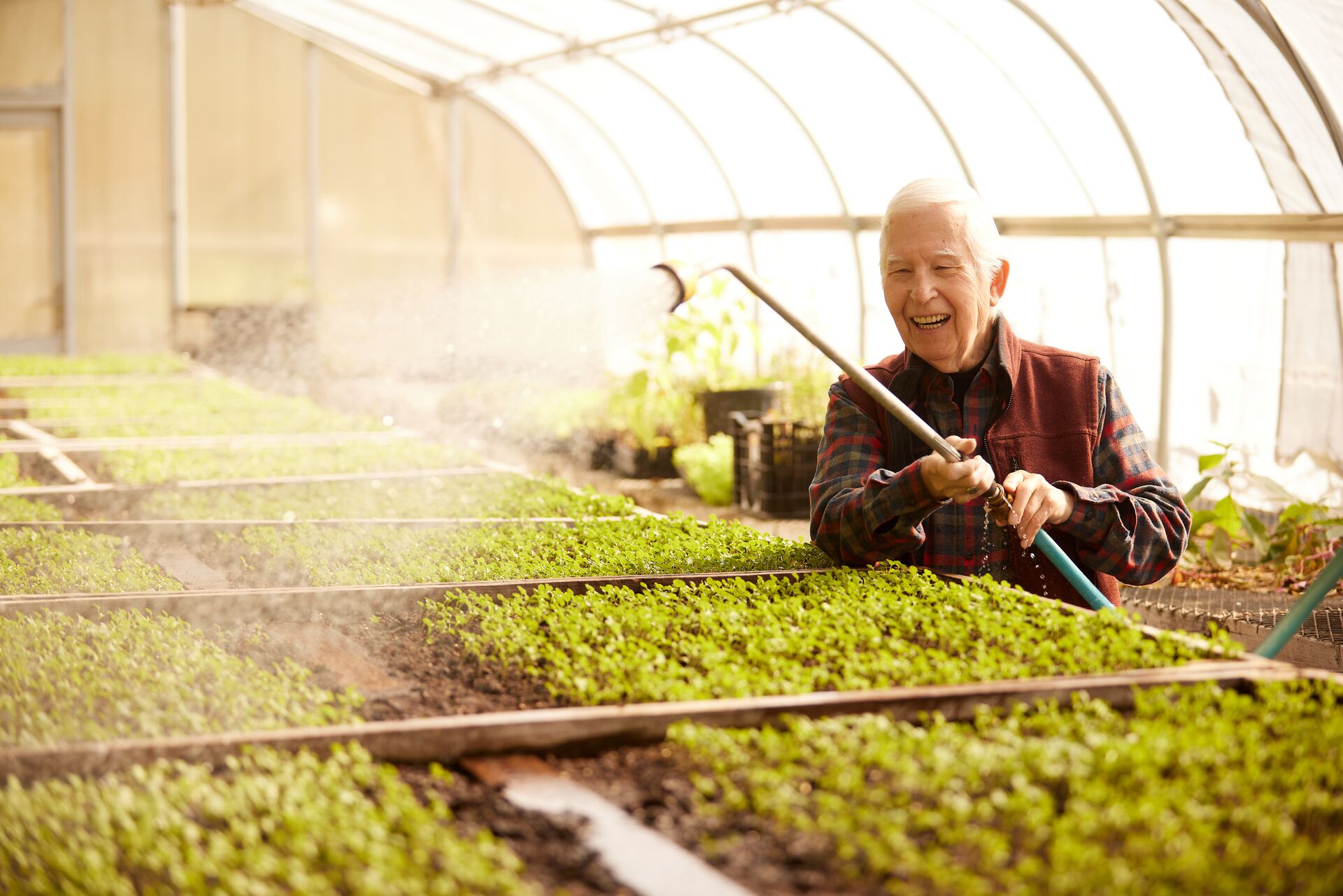Green Senior Living: How Our Communities Adhere to Highest Level of Sustainable Practices

Green Retirement Living: How Our Communities Adhere to Highest Level of Sustainable Practices
A commitment to sustainable living doesn’t end with retirement. In fact, this new season of life could be your chance to take your interest in environmentally friendly practices to all new highs.
It’s no secret senior living communities evolve to reflect the interests of prospective residents. That’s great news for eco-minded seniors who want sustainable, eco-friendly options for retirement living. Building to LEED standards and embracing passive house design are just two ways senior living communities are answering the demand for eco-friendly housing designed for the future.
Putting residents at the forefront is one important way 2Life Communities designs for economic and environmental sustainability. Residents’ goals, unique needs and abilities all factor into the design details, all of which are overseen by experts on the leading edge of sustainability design and construction. Ultimately, we invite residents to be stewards of our natural resources and become active partners in our communities’ sustainability efforts.
In fact, this approach has earned recognition by the U.S. Department of Energy. 2Life Communities is the first affordable housing multifamily partner in the department’s Better Buildings Challenge to reach its goal for energy-saving practices by reducing energy consumption 24%.
What is the benefit of LEED certification?
In short, Leadership in Energy and Environmental Design (LEED) is the world’s most widely recognized rating system for sustainable design. It’s a stamp of assurance that a project meets the highest standards for sustainability and leadership. Ultimately, the goal of LEED certification is to encourage building design that protects and preserves the environment.
LEED is a uniquely holistic system that considers multiple potential environmental impacts and rewards eco-friendly design and energy-efficient construction. The system recognizes design that conserves energy, promotes healthy living and working spaces, lowers carbon emissions, and saves money, among other green building standards.
A thorough verification process determines what level of LEED certification a project will earn. There are four potential levels of LEED certification: Certification, Silver, Gold and Platinum. Platinum projects demonstrate the highest achievement. Points are awarded in areas including carbon, energy, water, waste, transportation, materials, health and indoor environmental quality.
While one benefit of LEED-certified buildings is their appeal to eco-minded end users (studies show higher profitability, for example) the program is spurring meaningful change. LEED projects are expected to keep 540 million tons of waste out of landfills by 2030; they contribute 50% fewer greenhouse gas emissions than non-LEED buildings; and LEED buildings use 25% less energy than non-LEED buildings.
Also worth noting: LEED certification isn’t the end game. Once certified, a project must continually track metrics like energy and water usage in order to earn recertification.
How does passive housing help the environment?
Passive house is the leading standard for energy-efficient construction. Effectively a roadmap for energy reduction, passive house energy standards can reliably reduce as much as 90% of a building’s energy demand for heating and cooling and 75% less overall energy demand. In fact, when paired with a renewable energy source (solar, for example), passive house design makes the idea of zero-energy structures a legitimate possibility.
Passive house standards reflect five core energy-saving principles:
- Insulation appropriate for the climate
- A building that is airtight
- Design that impedes thermal bridging
- High-efficiency windows (including strategic orientation and shading)
- Heat recovery through continuous ventilation
Other tenets of passive house standards involve comfort, air quality and ease of use (including maintenance). A building or home built to passive house standards have minimal energy requirements but maintain steady temperatures throughout the year. The standards make traditional heating and cooling systems largely unnecessary.
Building a Community (Beyond the Architecture)
If your retirement aspirations involve a low-impact, eco-friendly lifestyle, you’ll want to check out Opus Newton, the first Opus community opening soon in Boston.
The community’s primary building faces south to increase natural sunlight and manage energy reliance; fully electric heating and cooling adds another energy control. The on-site dining program composts food waste, and building materials were specially selected for their low-embodied carbon design.
Of course, living a meaningful life isn’t just about celebrating green building standards or practicing a low-impact lifestyle — although it definitely doesn’t hurt! While we’re taking care to create a place you can feel proud to call home, we also believe living well is what happens when you surround yourself with possibilities.
You’ll find dozens of ways to enjoy a purposeful retirement, whether it’s through Opus Time (volunteering to make the community a better place) or putting your green thumb to work at Newton Community Farm, located right next door. This one-acre micro farm — which is dedicated to teaching and modeling sustainable, intensive farming — grows enough food to support nearly 200 families in addition to the thousands of pounds of produce it donates to promote food security.
You’ll also have plenty of opportunity to explore what interests you in the world, whether on a solo mission or with some neighbors in tow. You won’t have to look far: Abundant amenities are on-site and nearby, including a 55-acre park nestled along the Charles River, where you can learn to kayak, appreciate the opulent gardens, hike miles of trails, or pick up a game on one of the many playing fields.
Find a Community of Eco-Conscious Neighbors
Contact us to learn more about how you can become a part of this active group of neighbors who are embracing retirement as an opportunity to pursue purposeful, meaningful lives.

